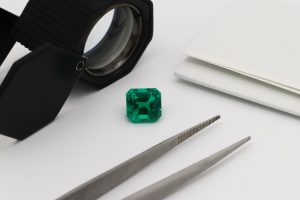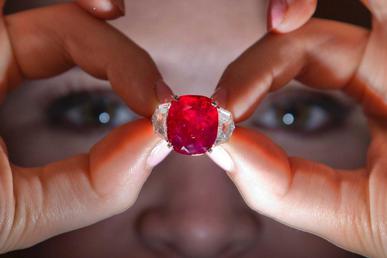The Gemological Institute of America, commonly known as GIA, is a renowned institution in the world of gemology and the jewelry industry. Established in 1931, GIA has played a pivotal role in shaping the standards for gemstone identification, grading, and education. In this article, we will delve into everything you need to know about GIA, including its history, mission, contributions to the industry, educational programs, and its impact on the world of gems and jewelry.
Everything You Need to Know About GIA
History and Mission
GIA’s journey began in 1931 when Robert M. Shipley founded the institute in Los Angeles. His vision was to bring transparency and credibility to the gem trade by establishing a standardized system for evaluating and grading gemstones. The mission of GIA has remained consistent throughout its history: to ensure the public trust in gems and jewelry by upholding the highest standards of integrity, academics, science, and professionalism.
Contributions to Gemology
Pioneering Gem Identification: One of GIA’s most significant contributions to gemology is its development of a standardized system for gemstone identification. Prior to GIA, gem identification was largely subjective and inconsistent. GIA introduced rigorous scientific methods and state-of-the-art gemological equipment to revolutionize the field. The institute’s work laid the foundation for modern gemstone identification, enhancing consumer confidence and industry standards.
Diamond Grading System: In the 1950s, GIA introduced the revolutionary Diamond Grading System. This system assesses diamonds based on the “Four Cs” – carat weight, color, clarity, and cut. GIA’s grading system became the industry standard, providing a universal language for evaluating diamond quality. It has empowered consumers to make informed purchasing decisions and set a benchmark for the diamond trade.
Colored Gemstone Grading: GIA’s influence extends to colored gemstones. The institute developed a comprehensive approach to grading colored gemstones, considering factors like color, clarity, cut, and carat weight. GIA’s colored gemstone reports are trusted worldwide, ensuring the quality and authenticity of these precious stones.
Research and Advancements: GIA is at the forefront of gemological research. Its team of experts conducts groundbreaking research into gemstone formation, properties, and identification. The institute’s studies on synthetic and treated gemstones have helped protect consumers from fraudulent practices. GIA’s research also contributes to our understanding of the geological processes that create gem-bearing deposits.
Educational Programs
GIA’s commitment to education is a cornerstone of its mission. The institute offers a range of educational programs tailored to aspiring gemologists, jewelers, and industry professionals:
Graduate Gemologist Program: The flagship program, the Graduate Gemologist (GG) course, provides comprehensive training in gemology. Students learn about gemstone identification, grading, and evaluation.
Specialized Courses: GIA offers specialized courses in topics like jewelry design, jewelry manufacturing arts, and colored stones. These programs cater to individuals interested in specific aspects of the jewelry industry.
Distance Education: Recognizing the need for accessibility, GIA offers online courses and resources. These digital platforms make gemological knowledge available to a global audience, allowing individuals to learn at their own pace.
Ethical Practices and Responsible Sourcing
In an era where ethical and responsible sourcing is paramount, GIA actively promotes sustainability and ethical practices in the gemstone industry. The institute advocates for transparency and traceability in the supply chain, ensuring that gemstones are sourced in an environmentally and socially responsible manner.
GIA’s efforts in this regard include research on the origin of colored gemstones to prevent their sourcing from conflict areas and the development of guidelines for responsible sourcing. By promoting ethical practices, GIA contributes to the gemological community’s collective responsibility to protect the planet and the livelihoods of those involved in the gem trade.
Pioneering Gem Identification
GIA’s foremost contribution to gemology is its pioneering work in gemstone identification. In the early days of the institute, gem identification was a subjective and inconsistent practice, relying heavily on the experience and expertise of individual gemologists. GIA changed this paradigm by introducing rigorous scientific methods and state-of-the-art gemological equipment.
The development of the GIA Diamond Grading System in the 1950s was a groundbreaking achievement. This system standardized the grading of diamonds based on the “Four Cs” – carat weight, color, clarity, and cut – providing a universal language for assessing diamond quality. GIA’s contribution in this regard has not only enhanced consumer confidence but has also set a benchmark for the entire diamond industry.
Gemstone Grading and Certification
GIA’s influence extends far beyond diamonds; it encompasses the grading and certification of colored gemstones as well. The institute’s comprehensive approach to gemstone grading takes into account factors like color, clarity, cut, and carat weight, similar to diamonds. This has brought much-needed consistency and transparency to the colored gemstone market.
GIA’s colored gemstone reports are highly regarded worldwide, assuring buyers of the quality and authenticity of their purchases. Gemstones bearing GIA certificates are trusted by both industry professionals and consumers alike, underlining GIA’s monumental contribution to gemstone standardization.
Research and Advancements in Gemology
GIA’s commitment to advancing gemological knowledge is exemplified by its extensive research initiatives. The institute boasts a team of renowned gemologists, mineralogists, and geologists who conduct groundbreaking research into the formation, properties, and identification of gemstones.
One notable contribution is GIA’s research on synthetic and treated gemstones. As new methods for creating gemstone simulants and enhancements emerge, GIA continually develops detection techniques to protect consumers from fraudulent practices. This research keeps gemologists and the industry at large informed and equipped to identify these treatments accurately.
Furthermore, GIA’s studies on the origin of gemstones have shed light on the geological processes that produce these treasures. By tracing a gemstone’s journey from its formation in the Earth’s mantle to its extraction and cutting, GIA contributes significantly to our understanding of the geology of gem-bearing deposits.
Gemological Education and Training
Education lies at the heart of GIA’s mission. The institute offers a wide range of educational programs and courses designed to train the next generation of gemologists, jewelers, and industry professionals. Through its Graduate Gemologist program and various specialized courses, GIA imparts in-depth knowledge about gemstones, their identification, grading, and market value assessment.
GIA’s commitment to education extends beyond traditional classrooms. The institute also provides educational resources online, making gemological knowledge accessible to a global audience. Aspiring gemologists and gem enthusiasts worldwide benefit from GIA’s informative articles, videos, and interactive tools.
Ethical Practices and Responsible Sourcing
In an era of heightened awareness regarding ethical and responsible sourcing, GIA has taken proactive steps to promote sustainability and ethical practices in the gemstone industry. The institute actively encourages transparency and traceability in the supply chain, ensuring that gemstones are sourced in an environmentally and socially responsible manner.
GIA’s efforts in this regard include research on the origin of colored gemstones to ascertain if they come from conflict areas and the development of guidelines for responsible sourcing. By promoting ethical practices, GIA contributes to the gemological community’s collective responsibility to protect both the planet and the livelihoods of those involved in the gem trade.
Conclusion
The Gemological Institute of America (GIA) has left an indelible mark on the world of gemology and the jewelry industry. Its contributions in gemstone identification, grading, and education have set the gold standard for the entire industry. GIA’s commitment to integrity, science, and professionalism has built trust among consumers and industry professionals alike. As we celebrate GIA’s remarkable journey, we acknowledge its enduring impact on the world of gems and jewelry, ensuring that these precious treasures of the Earth continue to be appreciated and cherished for generations to come.
The Gemological Institute of America has left an indelible mark on the world of gemology. Its contributions, ranging from pioneering gem identification and grading to cutting-edge research and ethical sourcing initiatives, have shaped the gem industry in profound ways. GIA’s commitment to education ensures that its legacy continues to inspire future generations of gemologists and gem enthusiasts. In celebrating GIA’s enduring contributions to gemology, we also acknowledge its pivotal role in preserving the beauty and integrity of these precious treasures of the Earth.
Read More :- Unveiling the Allure: The Intricate Factors Behind the High Cost of Diamonds in 2023














One Comment